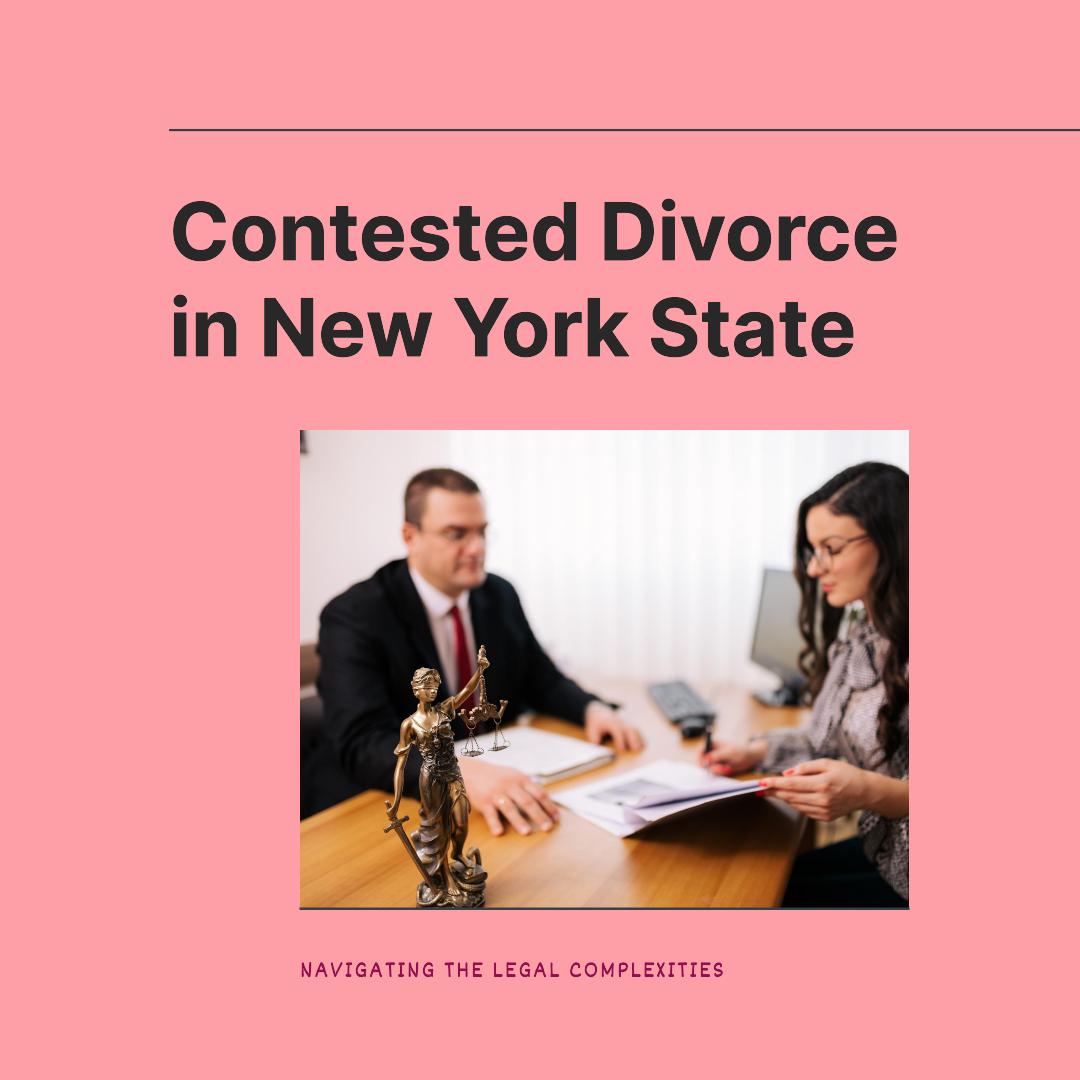Divorce is a challenging process, and when it becomes contested, the complexities multiply. In New York State, contested divorces involve disputes over critical issues like child custody, asset division, and spousal support. Navigating this legal terrain demands understanding of the procedures, laws, and strategies involved. This ultimate guide aims to provide clarity on contested divorce proceedings in New York State.
1. Understanding Contested Divorce in New York
In a contested divorce, spouses cannot agree on one or more key issues, leading to litigation to resolve their differences. Unlike uncontested divorces, where both parties agree to the terms and conditions, contested divorces involve court intervention to settle disputes.
2. Grounds for Contesting a Divorce
New York allows both fault and no-fault grounds for divorce. Fault grounds include adultery, abandonment, cruel and inhuman treatment, and imprisonment. No-fault grounds, introduced in 2010, allow divorce when the marriage has been irretrievably broken for at least six months. Contesting a divorce often involves disproving or contesting the grounds cited by the petitioner.
3. Initiating the Contested Divorce Process
To initiate a contested divorce, one spouse (the petitioner) files a Summons with Notice or a Summons and Complaint in court, specifying the grounds for divorce and the relief sought. The other spouse (the respondent) then has a set time to respond, usually 20 or 30 days depending on how they were served.
4. Legal Representation and Counsel
Given the complexities of contested divorces, legal representation is crucial. Each spouse should seek competent legal counsel to protect their rights and interests. Attorneys help navigate the legal process, provide advice, and advocate on behalf of their clients in court.
5. Discovery and Evidence Gathering
Discovery is the process where both parties exchange information and evidence relevant to the case. This can include financial documents, witness testimonies, and other evidence supporting each party's claims. Discovery helps build the case and may uncover hidden assets or liabilities.
6. Negotiation and Settlement Attempts
Before going to trial, parties often attempt to negotiate a settlement through mediation or direct negotiation. Settlement negotiations can address issues such as property division, child custody, visitation rights, and spousal support. A settlement can save time, money, and emotional energy compared to a trial.
7. Trial Proceedings and Court Hearings
If negotiations fail, the case proceeds to trial. During the trial, both parties present their arguments and evidence to the judge, who then makes decisions on contested issues. Trials can be lengthy and emotionally draining, but they are necessary when parties cannot reach an agreement through other means.
8. Post-Divorce Considerations and Appeals
After the court issues a divorce decree, parties must comply with its terms. This may involve transferring assets, paying support, or adhering to custody arrangements. In some cases, either party may choose to appeal the court's decision if they believe it was erroneous or unfair.
9. Conclusion: Navigating Contested Divorce with Confidence
Contested Divorce New York State can be arduous and emotionally taxing, but with the right knowledge and guidance, individuals can navigate the process with confidence. Understanding the legal procedures, seeking competent legal representation, and being open to negotiation can help parties achieve a fair resolution and move forward with their lives.
In conclusion, contested divorce proceedings in New York demand thorough preparation, patience, and legal acumen. By being informed and proactive, individuals can protect their rights and interests throughout the process, ultimately reaching a resolution that allows them to begin anew.





Comments